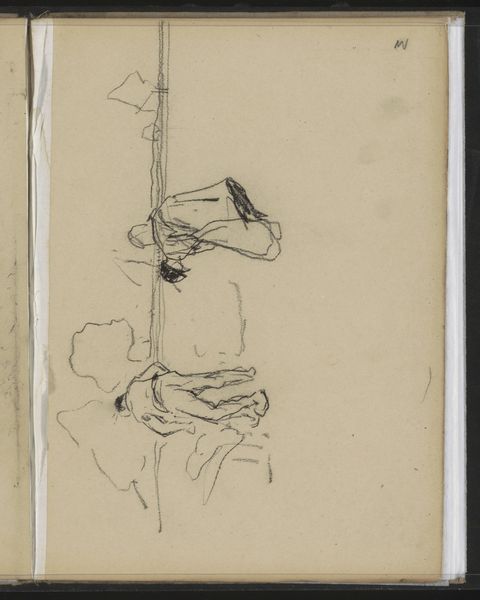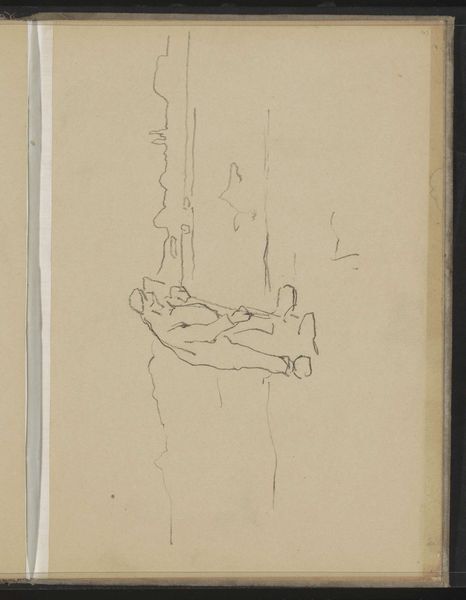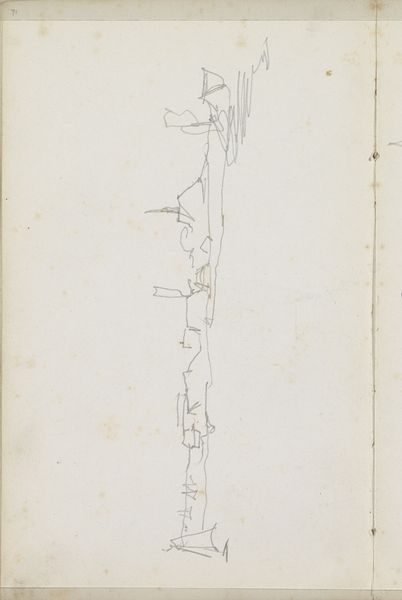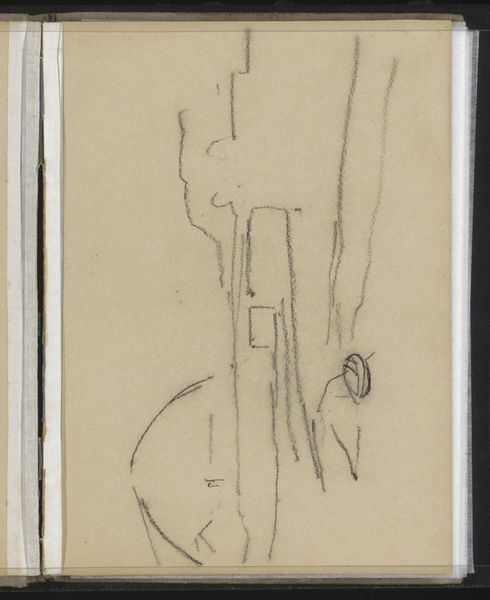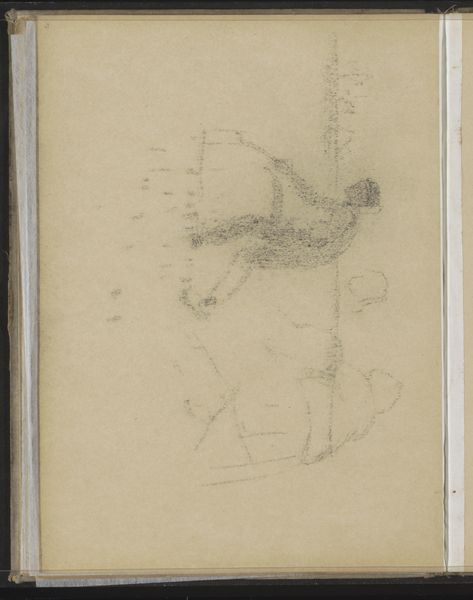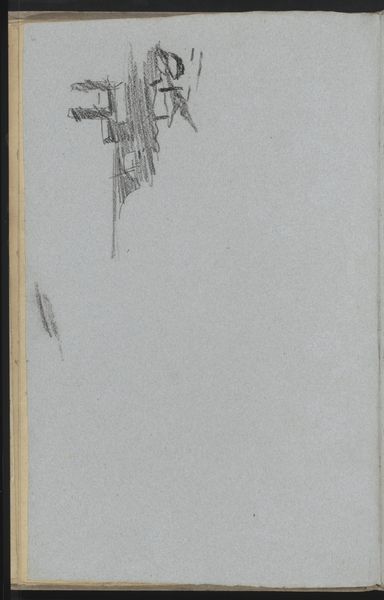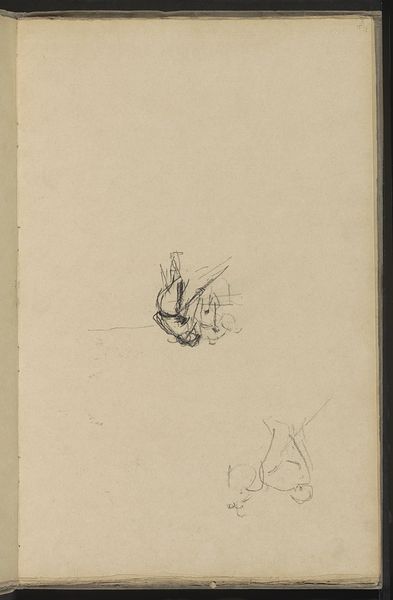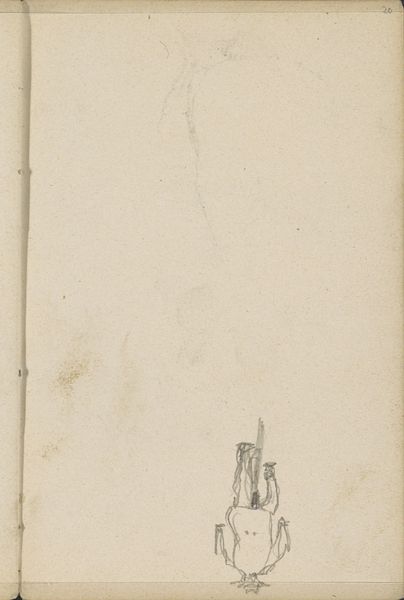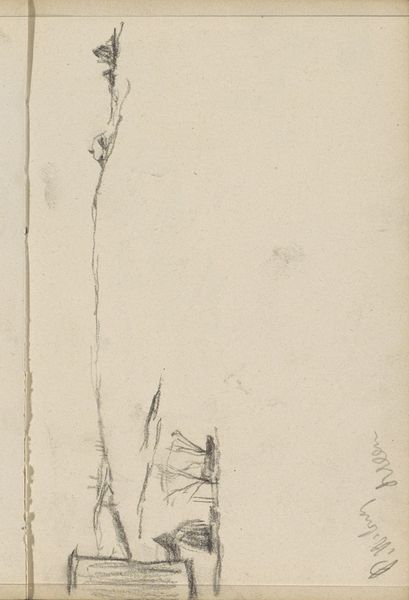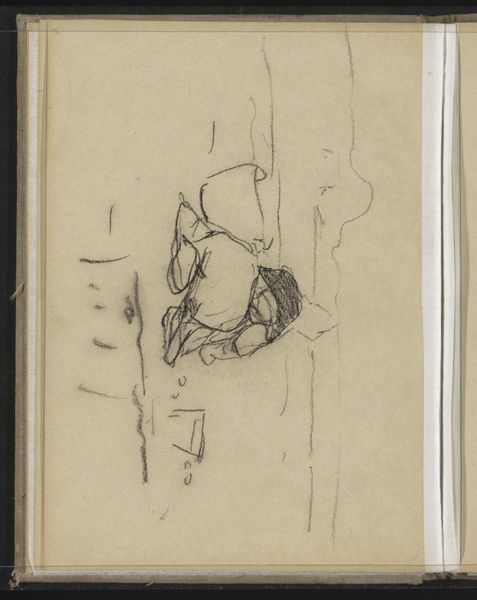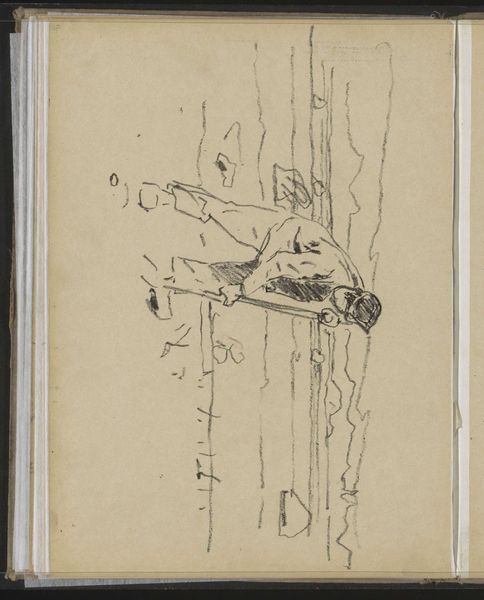
Copyright: Rijks Museum: Open Domain
Editor: So, here we have Willem Witsen's pencil drawing, "Two Farmers Working in the Field," from somewhere between 1893 and 1897. It's interesting how spare it is; the figures seem almost suspended. What do you see in this piece? Curator: I see a reflection of the evolving socio-political landscape regarding labor and its representation in art. Witsen’s choice to depict rural laborers at this time, even in such a minimal form, speaks to a broader interest in the working class that was bubbling up throughout Europe. Editor: An interest? Is there anything unusual about how this interest is represented? Curator: Certainly. Consider the art academies of the time. They tended to celebrate heroic or historical subjects. So, we have to ask: what does it mean to portray agricultural work with such unadorned realism, almost sketch-like, rather than idealized or romanticized? Is he commenting on the backbreaking toil? Is there dignity to be found there, despite how physically demanding that labor can be? Editor: I guess it’s easy to forget that artistic choices also say something about power structures, like, who gets remembered and how. I originally looked at the art as an aesthetic statement, but you bring up questions of the representation of labour and how society at the time valued and treated this group of people. Curator: Precisely. It pushes us to consider the museum itself as a social and political space: who decides what gets displayed, and what narratives are implicitly validated through that display? Editor: That's given me a whole new angle on how to look at this drawing, especially when looking at something that on first glance seems like a pretty humble subject.
Comments
No comments
Be the first to comment and join the conversation on the ultimate creative platform.
